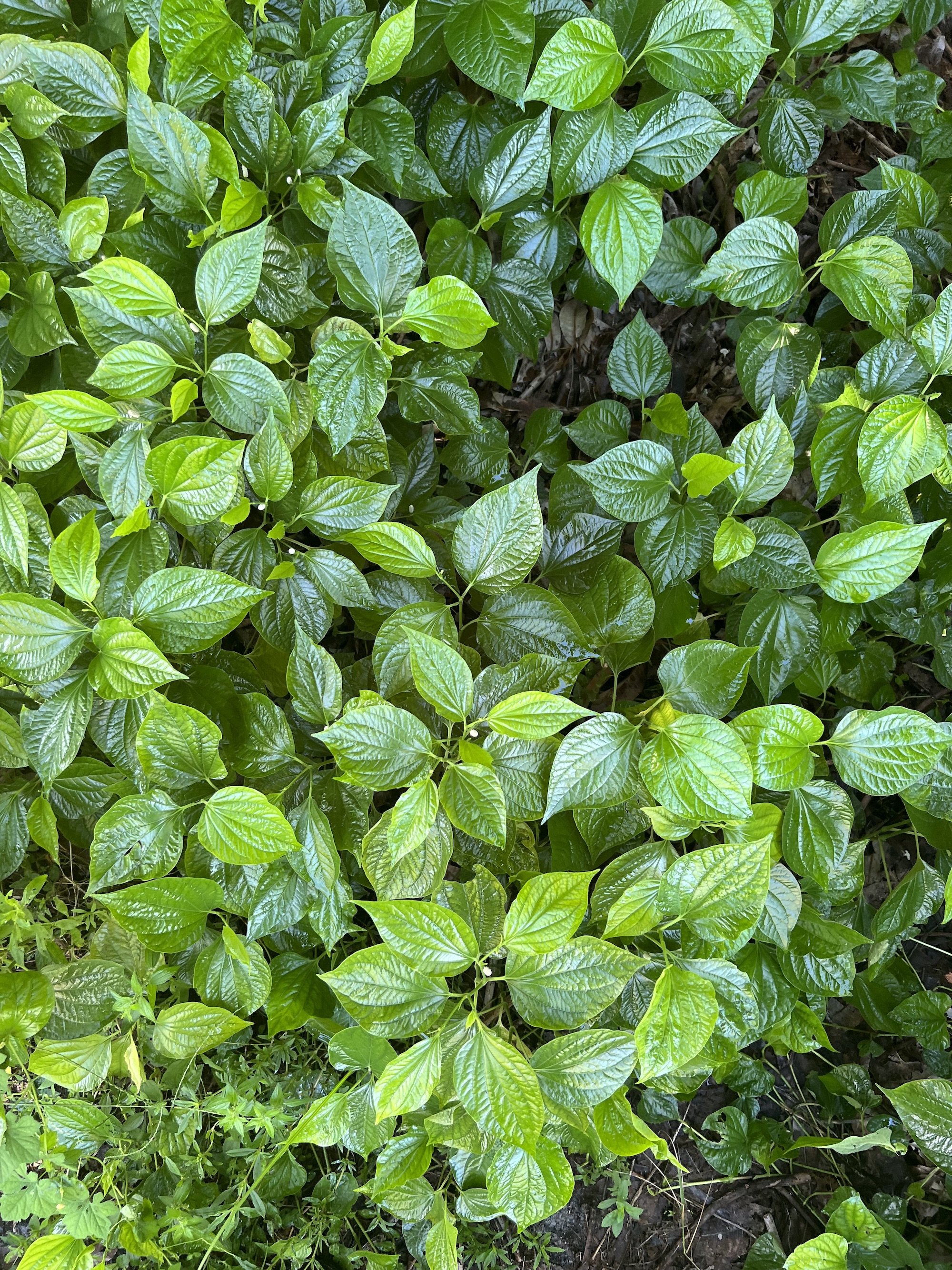
Plant Profiles
Rose Cactus
Pereskia bleo
Also known as Wax Rose, this is a unique leafy cactus plant that produces an edible fruit that resembles a rose. The fruit has a sour flavor much like a lemon with the crunchy, juicy texture of star fruit (carambola). —Photo from Urban Tropicals
Barbados Gooseberry
Pereskia aculeata
Also known as Lemon Vine, Uña de Gato, and many other names, this unique leafy cactus plant is even more unique in that both leaves and spikes stick straight out of the small fruits! It ripens from acidic to slightly sweet with both fruity and more savory vegetable tones, like a tomato-carrot-peach kind of flavor. —Photo from @zeezbloomz
Peruvian Apple (Kadushi)
Cereus repandus
This cactus fruit sets itself apart from all others with a columnar growth habit as smooth, spike-free varieties. Like a dragon fruit but on the sweeter side, they have the refreshing texture of a kiwi but without the acidity, with pleasantly crunchy little black seeds and a mild sweet flavor. —Photo from @neelylab8
Pitahaya (Dragon Fruit)
Hylocereous undatus
This incredible refreshing fruit is like biting into a giant kiwi without any of the acidity, but with the same juicy texture and pleasantly crunchy little black seeds. Flavor ranges from mildly sweet to sweeter, and fruits range from smooth to spiked. The growth form of the plants is a vining type epiphyte cactus that grows up trees.
Tunas (Prickly Pear)
Opuntia ficus-indica
Tunas are super sweet delicious fruits from specific fruiting varieties of nopales. The color that they are on the outside is indicative of the color of the flesh within, similar to pitayas in texture and flavor, and they have small but intense spikes that must be removed before peeling. —Photo from @amoxtli_andante
Xoconostle
Opuntia matudae
This variety of tuna (prickly pear) grows on a pad-shaped cactus and tends to be lighter in color with a light pink blush and a particularly sour flavor. Also, rather than its seeds being distributed throughout the fruit like regular prickly pear and dragon fruit, it has a centralized cavity more like a cantaloupe or a tomato. —Photo from @luisguillermo_vargas.studio
Pitaya Mexicana
Stenocereus thurberi
Pitayas grow on tall columnar cactuses, are smaller and sweeter than dragon fruit, and come in a wide variety of vibrant colors. The fruit is completely covered in spikes and must be harvested carefully with tongs. —Photo from Luces del Siglo








